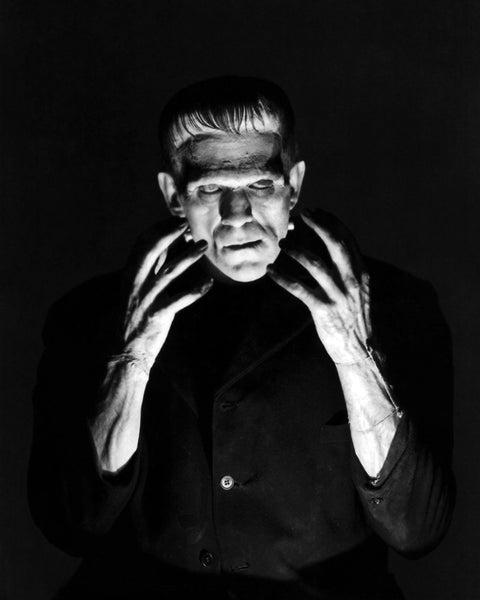
Is There Any Historical Truth In The Story of “Frankenstein”?
Whether or not you think of Mary Shelley’s 1818 gothic novel or Mel Brooks’ 1974 film spoof, the name “Frankenstein” inevitably conjures up images of a mad scientist and a monster spawned from ghastly experiments on the dead. It could be written off as a work of complete horror fiction, of course—except for the fact that there is actually a Frankenstein castle ( Burg Frankenstein ) located in Hesse, Germany. Is there a historical connection?
The Mad Scientist
The castle was actually the birthplace of Johann Konrad Dippel, who would certainly qualify as “mad scientist.” The son of a preacher, Dippel was schooled in theology but ventured into alchemy after deciding that he more or less hated organized religion. After dabbling in alchemy in Strasbourg for a year from 1695-6 he became convinced he could turn silver and mercury into gold—which he tried and failed to make a living at doing in Berlin from 1704 to 1707.
Dippel spent the rest of his life as only a mad scientist could—attempting to blend science with occultism, trying to create a “universal cure,” becoming notorious for gruesome dissection experiments and penning pamphlets about his purported esoteric knowledge. In one of his papers, he claimed that he could transfer life from one corpse to another by using a funnel. He was rumored to have robbed graves to carry out his experiments.
Needless to say Dippel made many enemies—probably enough to storm his castle with torches and pitchforks, just like you might expect in any __ Frankenstein-themed movie. He had become a rather infamous character in Germany. While some intellectuals admired him for his experiments and abstract musings, most ordinary folk viewed him as an evil sorcerer.
But Dippel’s life ended without any high gothic drama—shortly after declaring that he would live until the age of 135, he was found dead in bed, and was alleged by many of his contemporaries to have been poisoned.
Where does Mary Shelley Come In?
In 1814, the famed author-to-be of Frankenstein, Mary Wollstonecraft Shelley, took a tour along the Rhine accompanied by her husband, Percy Bysshe Shelley. Mary visited the town of Gernsheim, located about 10 miles from Frankenstein castle, and traveled around the surrounding region, interacting with locals.
Many people, including biographers of Mary Shelley, regard it as possible that she could have heard ghastly tales about Dippel from local people. Others theorize that she may have heard about him from the Brothers Grimm via her folklorist stepmother Mary Jane Clairmont, but this seems far less likely.
In any case, the fact that Shelley produced her famous monster novel four years after visiting Gernsheim doesn’t seem to be a complete coincidence. However Shelley never claimed that Dippel was a direct inspiration for her story.
The Facts
Some of the stories about Dippel which have been repeated over time have been embroidered into myths. Although some have claimed that he used Frankenstein castle as a base to conduct medical experiments, there is no evidence proving that Dippel returned there after his alchemy studies.
The Hessian government webpage dedicated to local castles seeks to present a more dignified view of Burg Frankenstein and distance the place—if that were possible—from the wild horror stories. (Not quite to the level of “It’s pronounced Frankensteen” –but the website does state firmly that, “Novelist Shelley was never there” and implies that the idea of the castle inspiring her novel is a “fantasy.”)
The castle has nevertheless remained most associated with Dippel and Shelley’s novel, and has capitalized on this association over time. American servicemen stationed in Germany in the decades following World War II found the castle an ideal spot for Halloween gatherings. The spooky parties there took on a life of their own after the mid-1970s, and the castle became the venue for one of Europe’s largest Halloween festivals.
Thus thanks to Shelley’s monster—and the creepy stories still circulating about Dippel—the place has become, according to Germany’s Hessenschau news, “one of the most important cultural sites in southern Hesse.”
That tradition is on the rocks, however. The castle’s walls are crumbling. Both the castle and its restaurant are due to undergo extensive renovations, which will mean that the famed Halloween parties will cease indefinitely from 2024.
